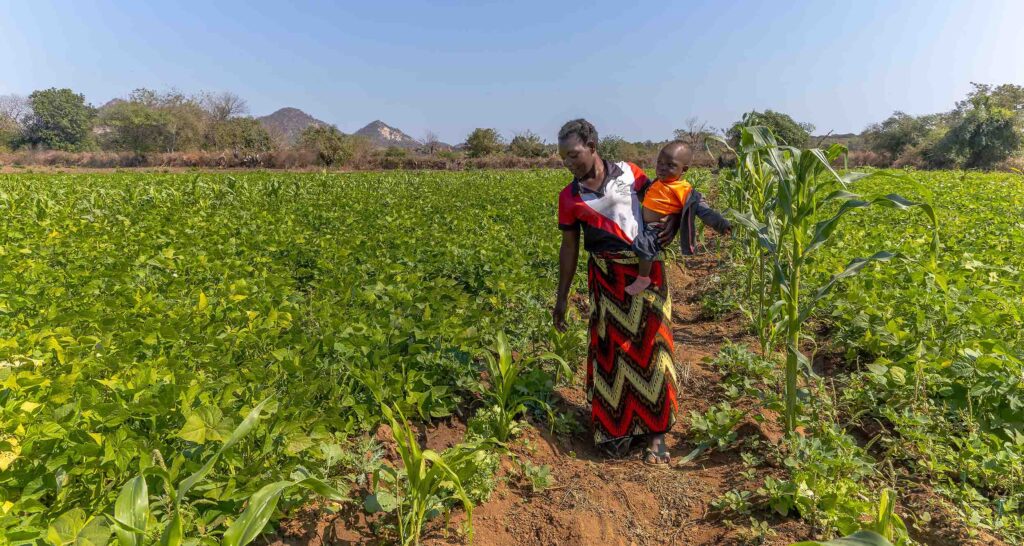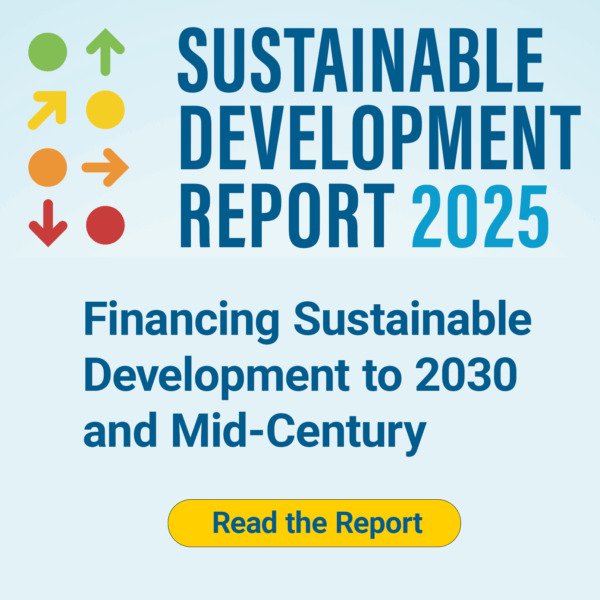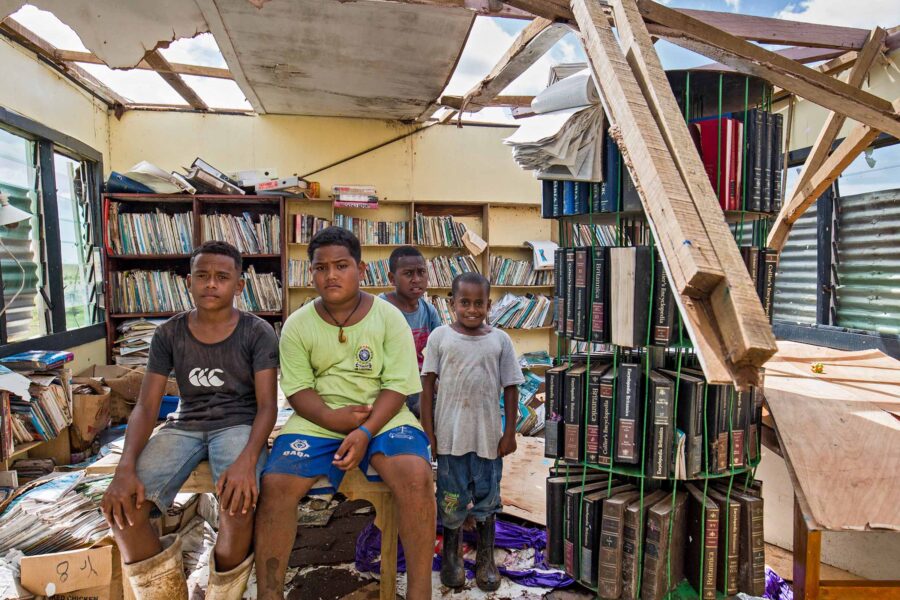Food systems that bend, not break: a mandate for COP30
As climate shocks multiply and conflicts strain supply chains, the world’s food systems are showing dangerous cracks. Building resilience – from farm diversity to fairer trade – must be at the heart of climate action at COP30
Food systems and sustainable agriculture

When war broke out in Ukraine, global grain markets trembled. A conflict in one region was enough to send bread and cooking oil prices soaring from Cairo to Dhaka. This was not just a geopolitical crisis – it was a stress test for a global food system built on fragility. The need to build resilience is not theoretical – it is unfolding in real time, everywhere. Conflicts always show how quickly food systems collapse when supply chains, infrastructure, and civilian access to basic services are disrupted. Beyond the immediate and profound human suffering, such crises reverberate through markets, trade routes, and humanitarian pipelines far beyond their borders.
Climate change now threatens to make such shocks the norm rather than the exception. Record heat, erratic rainfall, and floods are already reshaping agricultural production – and, with it, the stability of global markets. The Food and Agriculture Organization (FAO) Food Price Index has eased from its 2022 peak, but the ripple effects of that spike made one truth undeniable: when too much depends on too little, the world’s plates can empty fast.
A fragile foundation
The vulnerability of today’s food systems runs deep. Humanity has domesticated more than 50,000 edible plants, yet just three crops – rice, maize, and wheat – provide around 60% of global food energy. This narrow foundation has delivered remarkable efficiency, but at a dangerous cost. When a single breadbasket falters due to conflict or natural hazards, the consequences cascade across continents.
Climate change intensifies this fragility. Projections by the Intergovernmental Panel on Climate Change show that without adaptation, yields for major staples will decline significantly in many regions by mid-century. The past two years have offered a preview:
- in India, floods, droughts, and instability in irrigation are making rice farming more difficult and undermining yields in several states
- in southern Africa, maize yields were estimated to be 17% below expected levels due to droughts
These are not outliers. They are signals of a food system entering a new era of climate volatility.
The consequences reach far beyond harvests. Each disruption compounds inequality, driving hunger, malnutrition, and instability. In 2024, around 2.6 billion people could not afford a healthy diet, and 150.2 million children under five (23.2%) were stunted, reflecting deep and persistent inequalities that climate shocks only exacerbate. The food system as it is now is productive under stable conditions, but dangerously fragile when crises strike.
Resilience begins on the farm
One of the most powerful ways to reduce this risk is diversifying what we grow, trade, and eat. Research by the Alliance of Bioversity International and CIAT shows that farmers cultivating a broader portfolio are better able to maintain yields and incomes during climate shocks. Successful crops include climate-resilient and neglected and underutilized species (NUS) such as millets, sorghum, pulses, and roots.
NUS offer a double dividend. They are nutritionally dense and climate-hardy, often thriving in marginal environments with less water and fewer inputs. Many are deeply embedded in local food cultures, making them socially and economically viable. Reviving these crops is not just an agronomic strategy – it is an investment in resilience, equity, and nutrition.
This approach speaks directly to multiple Sustainable Development Goals (SDGs). NUS:
- strengthen SDG 2 (zero hunger) and SDG 3 (good health and well-being) through improved diets
- support SDG 13 (climate action) by enhancing adaptation and lowering emissions
- advance SDG 15 (life on land) by conserving agrobiodiversity
Building trust across borders
But diversification alone is not enough. Transforming food systems is neither linear nor uncontested. It means confronting trade-offs and building consensus where interests diverge. Trade policy is one of the most contentious areas. When crises hit, some governments restrict exports to protect domestic consumers. Yet OECD analysis shows that restrictions often deepen global price spikes, disrupt supply chains, and increase vulnerability in importing countries, many of which already face high levels of food insecurity.
These unilateral decisions can trigger a domino effect, as other countries impose similar restrictions to safeguard their own supplies, further tightening markets, and escalating volatility. By contrast, coordinated measures grounded in science-based policy and mutual trust can stabilize markets and reduce the scale of crisis impacts.
Partnerships are central to making this possible, as governments alone cannot carry the weight of such coordination. Collaboration among public institutions, research organizations, the private sector, farmers’ groups, and humanitarian actors allows for diversified and more adaptive responses. Science-based policymaking, informed by climate and market data, provides the foundation for trust, while multistakeholder platforms give countries and communities the flexibility to act together rather than in isolation. This is precisely the kind of collective response envisaged by SDG 17 (partnerships for the Goals), a recognition that no single country or sector can manage climate-related food shocks alone.
From labs to field: making innovation work for farmers
Technology and innovation are another critical factor in this transformation. New breeding tools, including gene editing, can accelerate the development of drought and heat-tolerant varieties, helping farmers adapt more quickly to shifting climates. These innovations can also unlock the potential of underutilized crops, bringing new resilience to production systems.
But their promise depends on trust and governance. Without transparent regulation, inclusive decision-making, and meaningful farmer engagement, innovation can outpace social acceptance, deepening divides rather than closing them. Participatory breeding, open-access research, and locally grounded testing build legitimacy and ensure new technologies meet real needs.
Technology uptake can only be scaled when the right enabling environment is in place. Farmers need access to information, affordable credit, secure land tenure, and clear incentives. Climate services and risk finance help them make informed decisions and buffer the impacts of shocks.
Shorter supply lines bring more stability
How food moves is as important as how it is grown. Over-reliance on long-distance trade leaves countries vulnerable to disruptions they cannot control. Notably, Africa imports over USD 50 billion worth of food annually. Strengthening local and regional markets, investing in storage and processing, and using public procurement to create stable demand can make supply chains more resilient.
In West Africa, for example, school-feeding programs under the home-grown model now operate in every country of the Economic Community of West African States (ECOWAS) region, and procure a significant portion of food from local smallholder farmers. By creating predictable demand for locally produced cereals, pulses, and fortified foods, these programs help stabilize markets and reduce post-harvest losses. They also contribute to improved nutrition outcomes among children, reinforcing the link between agriculture and health.
Another example is the community seed banks supported by the Alliance of Bioversity International and CIAT, which ensure reliable access to climate-resilient crops even under stress conditions. This kind of initiative connects SDG 2, SDG 3, and SDG 12 (responsible consumption and production) in practice.
From commitment to action at COP30
While food systems’ transformation and resilience are a cornerstone of the SDGs, for years they sat at the margins of climate negotiations. That changed at the 2023 UN Climate Change Conference (COP28), when more than 150 countries endorsed the UAE Declaration on Sustainable Agriculture and Resilient Food Systems.
But momentum must not end there. COP30, in Brazil in November 2025, offers a critical opportunity to embed food systems resilience at the heart of climate action. That means aligning National Adaptation Plans under the UN Framework Convention on Climate Change with food system priorities, and directing climate finance not only toward emissions mitigation, but also toward adaptation measures such as seed system strengthening, early warning, and risk finance.
Resilience cannot remain a buzzword. Shocks will keep coming. The choice is whether we build food systems that break, or food systems that bend. COP30 must be the turning point where resilience moves from rhetoric to reality.






